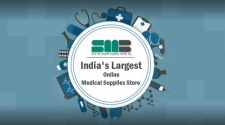Acing the job interview is key to getting a job offer. But before you get a job interview, you have to make your resume stand out from the rest. A resume is like a first impression. You’ll want to make sure yours impresses and makes your prospective employer pick up the phone and call you in for a job interview. At Goodwill Job Connection, we have employment specialists who will work with you to make your resume the very best it can be. Here, we’ll go over some tips to get your resume ready for success and get you that job interview.
The first thing you have to keep in mind is that you have to tailor your resume to the specific job for which you’re applying. Resumes aren’t one size fits all. While you can have a standard resume on hand, you’ll want to change it slightly based on the position you’re seeking. Let’s say for example that you’re applying for a job in customer service. For this position, you’ll be interacting with customers so you’ll want to emphasize your communication and people skills. If you have prior experience in this field, you can even relay an anecdote about how you were able to satisfy an initially unhappy customer in your cover letter for the position.
Once you’ve tweaked your resume to suit the position for which you’re applying, make sure it’s clean and easy to read. In general, you’ll want to try to keep your resume to a single page. You should also use an easy to read font and standard formatting. The person who is reviewing your resume may be busy and in a hurry, so you don’t want them to have to strain to read it. For more information on selecting the right font and formatting your resume properly, look here.
You’ll also want to make sure your resume is properly structured. You should have your name in bold at the top of your resume and in slightly larger font than everything that follows. Immediately below that, you should have your contact information (phone number and email address) listed. Once the prospective employer knows who you are and how to contact you, you’ll want to list your prior job experience. List the company name, your job title, and dates of employment first. Below that, explain your responsibilities and accomplishments in bullet point format. For example, if you were a sales associate at a retail shop, you might want to include something like, “I consistently outperformed other sales associates by selling $200 above the average amount per week.” Of course, you should never lie on a resume. But be sure to point out your skills and strengths so long as they’re factually accurate.
Your professional experience should be listed in reverse chronological order, meaning your most recent position should appear first. Generally speaking, you will want to list your three most recent employers. This could vary, however, depending on how many positions you’ve held and how long you’ve worked there. We’ll go over this in just a bit.
Once you’ve listed your prior experience, you’ll also want to list any memberships to professional organizations and outline your community involvement. Then detail your educational background, such as a bachelor’s or high school degree, but omit your year of graduation unless you are a recent graduate. Finally, you’ll want to describe your skills, certifications, or any awards and recognition you’ve previously received. For resume samples and templates to help get you started, check here.
You should probably omit any positions you’ve held for a short time, such as a summer job that only lasted a few months. However, if your prior experience is limited and you’ve only worked at each job for a short amount of time, explain the reason for leaving each position next to the dates of employment. For instance, “relocated”, “company went out of business”, or “left the position to pursue school full-time” would all be good explanations for short-term employment. Likewise, if you have numerous gaps in your employment (periods of time when you weren’t working at all), you can explain this in a summary statement prior to listing your experience. “Please note that gaps in employment were due to taking time off to raise kids full-time” or “I took a year off between jobs to travel so that I could broaden my cultural experience” are a couple good examples.
Once your resume is complete, make sure you save it with your name in the document title. John Doe Resume, for example. This will make it easier for a prospective employer to find your resume on their computer by doing a simple name search. Also, remember to constantly update your resume as you acquire new skills and experience. You want to make sure you always have the most current and accurate information available.
Once your resume is complete, it’s a good idea to proofread it. Take a break after working on it and then come back to look at it with a fresh set of eyes. Check for any misspellings or other mistakes. Once you edit your resume, have a second person look over it so they’ll pick up on any mistakes you may have missed. It’s also a good idea to come in and meet with one of our employment specialists. They can look over your resume and provide suggestions on how to improve it to make it really stand out.
Remember, that your cover letter and resume are often the first impression that you will make with your potential new employer. You want to make a great one, right? So really take the time and care to draft a resume that’s going to make you a competitive job candidate. If you need a little help along the way, we’re here for you. Our employment specialists will answer any questions you have and provide resume feedback. Also, if you’re presently seeking employment, be sure to check out one of the great job fairs we have coming up.















